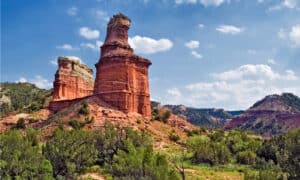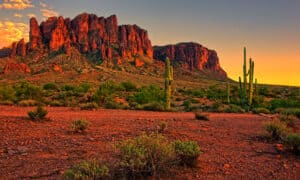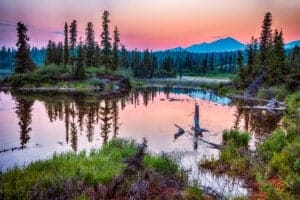Discover the 9 Best National Parks to Visit in Hawaii
@media (min-width: 481px) {
.mobile-top-content {
display: none;
}
}
#mobileTopContentCTACarouselControls { overflow: hidden; text-overflow: ellipsis; white-space: nowrap; }
.mobile-top-content .more { color: #fff; }
.mobile-top-content a { color: #fff; text-decoration: underline; }
.mobile-top-content a:hover { color: #fff; text-decoration: underline; }
@media (max-width: 480px) {
.mobile-top-content {
background-color: #06a10b;
color: #fff;
text-align: center;
/*height: 60px;
padding-top:5px;*/
font-size:80%;
/* display: block; */
margin: 0px -30px;
}
}
The island state of Hawaii is known for more than white sand beaches and relaxing restores. The area has a rich culture and history that is reflected in the preserved sites and lands. The isolated islands have a unique landscape and range of plant and animal life. Many creatures found in the Hawaii national parks aren’t found anywhere else in the world.
These nine national parks preserve all that the islands of Hawaii have to offer and offer plenty of ways for guests to enjoy them.
1. Pearl Harbor National Memorial

iStock.com/bennymarty
| Pearl Harbor National Memorial | |
|---|---|
| Size | 21.3 acres |
| Animal to see | Mao-nalo |
| Attraction to see | USS Arizona Memorial |
One of the most significant moments in United States history is showcased at the Pearl Harbor National Park in Honolulu, Hawaii. The USS Arizona Memorial was established in the park to honor the more than one thousand sailors and marines who were killed during the attack. Overall, more than 2,400 Americans lost their lives during the events of Pearl Harbor. The National Park covers over 20 acres of land and offers plenty of ways to connect with history. There is plenty of waterbirds and pool shrimp to come across during your trip.
2. Ala Kahakai National Historic Trail
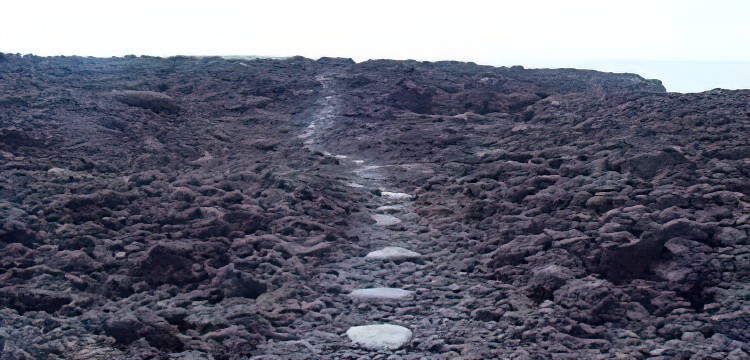
| Ala Kahakai National Historic Trail | |
|---|---|
| Size | 175 miles long |
| Animal to see | Brown anole |
| Attraction to see | Punaluʻu Beach |
The Ala Kahakai National Historic Trail was established in Hawaii in 2000. It protects and preserves native Hawaiian lands, resources, and culture. The 175-long route connects multiple different trails that visitors can hike. It’s on the main island and can be accessed in various different sections. When exploring the coast of the Ala Kahakai trail you may run into a number of reptiles and birds. You may spot geckos, brown anoles, doves, or sea turtles. Nearby Punaluʻu Beach offers ocean access for swimming and surfing.
3. Haleakalā National Park
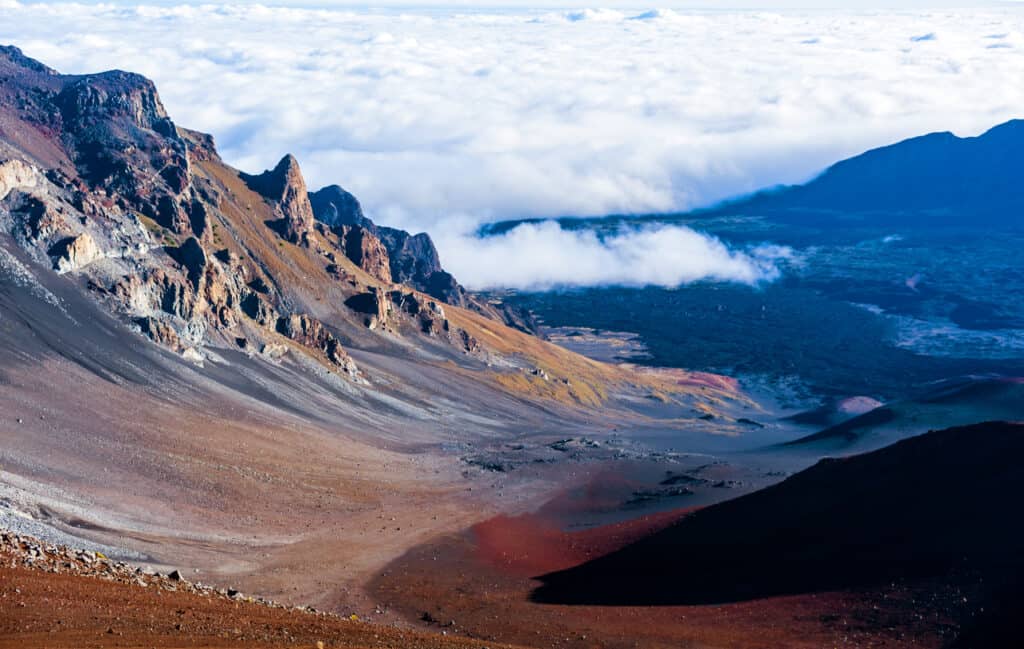
iStock.com/sphraner
| Haleakalā National Park | |
|---|---|
| Size | 33,265 acres |
| Animal to see | Seal |
| Attraction to see | Ohe’o Gulch |
This national park in Maui and Kula, Hawaii was established to connect modern and ancient Hawaii. It provides a place for people and nature to come together and is home to several endangered species that don’t live anywhere else. More than 30,000 acres of rainforests and volcanic landscapes provide plenty of ways to enjoy hiking. There are also guided tours, zip-lining, and horseback riding. When visiting Haleakalā you may encounter seals, sea turtles, bats, and a number of flightless birds. Make sure to stop by the Haleakala Crater or Ohe’o Gulch.
4. Hawai‘i Volcanoes National Park
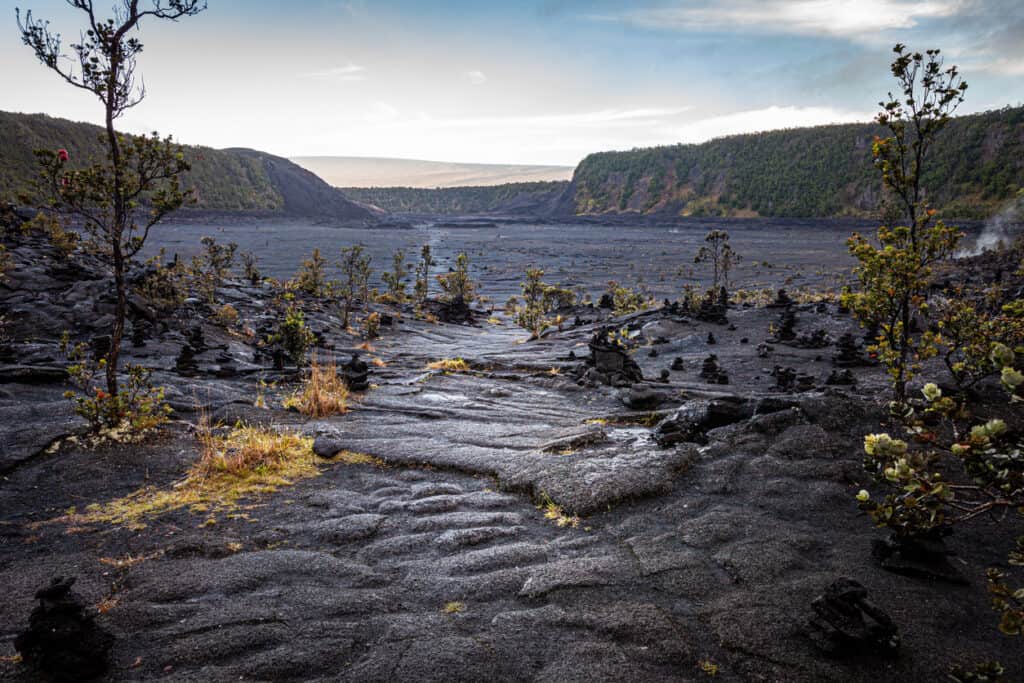
iStock.com/VezzaniPhotography
| Hawai‘i Volcanoes National Park | |
|---|---|
| Size | 335,259 acres |
| Animal to see | Green sea turtle |
| Attraction to see | Mauna Loa volcano |
Sitting more than 13,000 miles above sea level is the Hawai‘i Volcanoes National Park. It preserves some of the most unique landscapes in the entire country, including two of the most active volcanoes in the world. Visitors to the park can explore the summit of these two volcanoes, Kilauea and Mauna Loa. The park is also a UNESCO World Heritage Site and designated as an International Biosphere Reserve. There are even live webcams that let people glimpse volcanoes from anywhere in the world.
The park covers over three hundred thousand acres of land and is home to green sea turtles, happy face spiders, and the Hawaiian hawk. An analysis performed by researchers through the Vegetatio journal found that feral pig populations around the volcanoes have led to negative impacts on soil and vegetation.
5. Pu’ukohola Heiau National Historic Site

iStock.com/time2dive
| Pu’ukohola Heiau National Historic Site | |
|---|---|
| Size | 77 acres |
| Animal to see | Humpback whales |
| Attraction to see | Mauna Kea Beach |
The Pu’ukohola Heiau is a historic site in Hawaii that allows visitors a glimpse into the region’s early history. Visitors can explore the ancient temple and offering stand built by a Hawaiian king. The 77 acres of the national park preserve the last major temple on the island. If you’re looking to enjoy the coast, you can head to Mauna Kea Beach. You can run into many ocean species in Pu’ukohola Heiau. The area is home to humpback whales, reef sharks, and monk seals.
6. Puʻuhonua o Hōnaunau National Historical Park
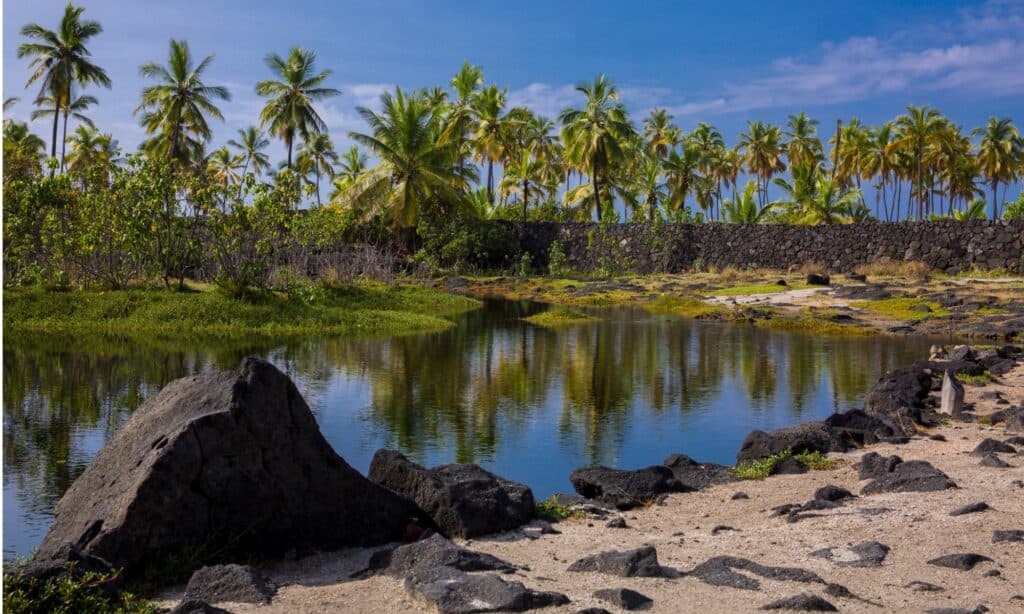
iStock.com/Claudia Cooper
| Puʻuhonua o Hōnaunau National Historical Park | |
|---|---|
| Size | 420 acres |
| Animal to see | Night heron |
| Attraction to see | Kona Shore |
The 182 acres of Puʻuhonua o Hōnaunau is a spiritual sanctuary on the west coast of Hawaii. The area was a refuge where people could go to escape physical harm. Defeated warriors and civilians would seek refuge in Puʻuhonua o Hōnaunau in times of war. The Kona Shore offers opportunities for visitors to run into sea turtles, and enjoy the beach. This national park is also home to monk seals, night herons, and geckos.
7. Kaloko-Honokōhau National Historical Park
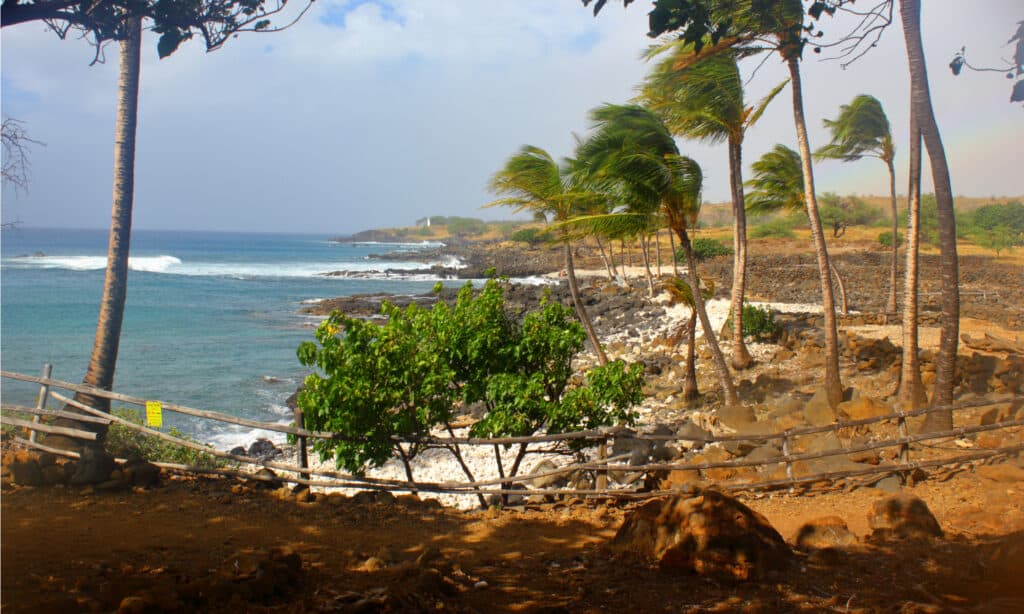
Matthew Grohovsky/Shutterstock.com
| Kaloko-Honokōhau National Historical Park | |
|---|---|
| Size | 1,161 acres |
| Animal to see | Mourning Gecko |
| Attraction to see | Anchialine Pools |
The Kaloko-Honokōhau National Park is home to many freshwater ponds that ancient Hawaiians once relied on to survive. The Anchialine Pools in the park are a unique kind of water ecosystem made up of brackish water. They contain red shrimp which east civilizations used as a major source of food. The tide pools of the shoreline are where you can find a number of bird species, such as Hawaiian stilts. The Kaloko-Honokōhau Park is also home to multiple gecko species, doves, ducks, and finches.
8. Kalaupapa National Historical Park
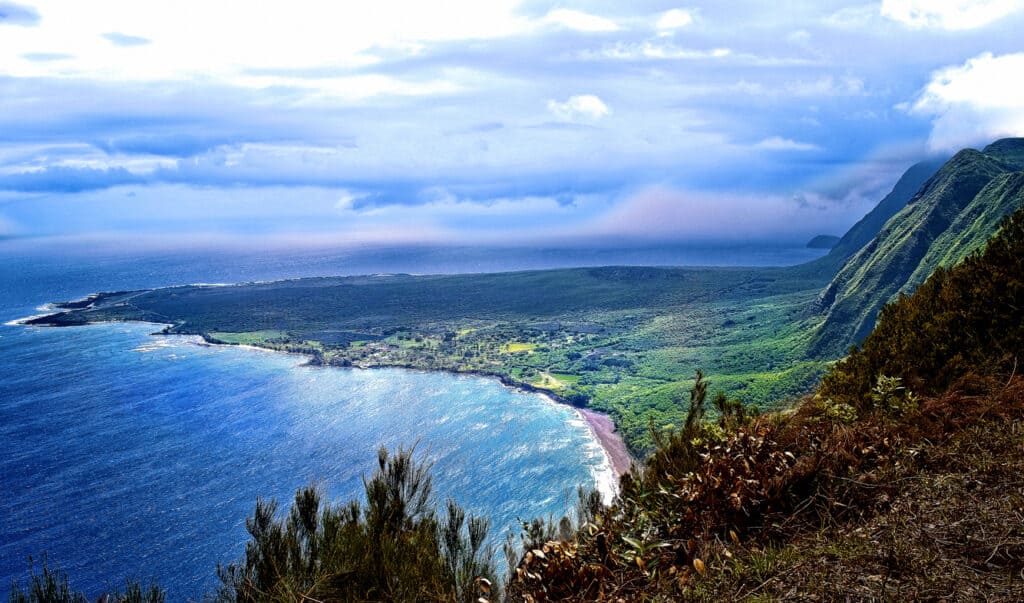
iStock.com/John Richard Stephens
| Kalaupapa National Historical Park | |
|---|---|
| Size | 10,779 acres |
| Animal to see | Hawaiian garden spider |
| Attraction to see | St. Philomena Church |
The Kalaupapa peninsula is in an isolated area of Molokai, Hawaii. The area was once a prison, and in 1866 was a refuge for Hawaiians that contracted Hansen’s disease. When the disease first came to the islands, King Kamehameha V banished anyone who was affected to the peninsula. Over 8,000 people have died in the area since then. The national park is still home to a few Hawaiian residents forced to live in isolation. It covers an area of 16 square miles and is home to monarch butterflies, Hawaiian garden spiders, and zebra doves.
9. Hono‘uli‘uli National Historic Site

Carolyn Hill/Shutterstock.com
| Hono‘uli‘uli National Historic Site | |
|---|---|
| Size | 122.5 acres |
| Animal to see | Shark |
| Attraction to see | Ko Olina Resort |
The historical site of Honouliuli hasn’t been open to the public yet but is being established to reflect on the lives of Hawaiian prisoners of war during WWII. The Honouliuli National Monument was first announced by former President Obama. It’s on the Oahu island and the site of the Honouliuli Internment Camp. It covers 122 acres, and you can expect to see sharks and sea turtles off the coast.
More from A-Z Animals
.more-snake-card-image { max-height:140px !important; }
@media (min-width: 481px) {
.mobile-top-content {
display: none;
}
}
#mobileTopContentCTACarouselControls { overflow: hidden; text-overflow: ellipsis; white-space: nowrap; }
.mobile-top-content .more { color: #fff; }
.mobile-top-content a { color: #fff; text-decoration: underline; }
.mobile-top-content a:hover { color: #fff; text-decoration: underline; }
@media (max-width: 480px) {
.mobile-top-content {
background-color: #06a10b;
color: #fff;
text-align: center;
/*height: 60px;
padding-top:5px;*/
font-size:80%;
/* display: block; */
margin: 0px -30px;
}
}
The island state of Hawaii is known for more than white sand beaches and relaxing restores. The area has a rich culture and history that is reflected in the preserved sites and lands. The isolated islands have a unique landscape and range of plant and animal life. Many creatures found in the Hawaii national parks aren’t found anywhere else in the world.
These nine national parks preserve all that the islands of Hawaii have to offer and offer plenty of ways for guests to enjoy them.
1. Pearl Harbor National Memorial

iStock.com/bennymarty
| Pearl Harbor National Memorial | |
|---|---|
| Size | 21.3 acres |
| Animal to see | Mao-nalo |
| Attraction to see | USS Arizona Memorial |
One of the most significant moments in United States history is showcased at the Pearl Harbor National Park in Honolulu, Hawaii. The USS Arizona Memorial was established in the park to honor the more than one thousand sailors and marines who were killed during the attack. Overall, more than 2,400 Americans lost their lives during the events of Pearl Harbor. The National Park covers over 20 acres of land and offers plenty of ways to connect with history. There is plenty of waterbirds and pool shrimp to come across during your trip.
2. Ala Kahakai National Historic Trail

| Ala Kahakai National Historic Trail | |
|---|---|
| Size | 175 miles long |
| Animal to see | Brown anole |
| Attraction to see | Punaluʻu Beach |
The Ala Kahakai National Historic Trail was established in Hawaii in 2000. It protects and preserves native Hawaiian lands, resources, and culture. The 175-long route connects multiple different trails that visitors can hike. It’s on the main island and can be accessed in various different sections. When exploring the coast of the Ala Kahakai trail you may run into a number of reptiles and birds. You may spot geckos, brown anoles, doves, or sea turtles. Nearby Punaluʻu Beach offers ocean access for swimming and surfing.
3. Haleakalā National Park

iStock.com/sphraner
| Haleakalā National Park | |
|---|---|
| Size | 33,265 acres |
| Animal to see | Seal |
| Attraction to see | Ohe’o Gulch |
This national park in Maui and Kula, Hawaii was established to connect modern and ancient Hawaii. It provides a place for people and nature to come together and is home to several endangered species that don’t live anywhere else. More than 30,000 acres of rainforests and volcanic landscapes provide plenty of ways to enjoy hiking. There are also guided tours, zip-lining, and horseback riding. When visiting Haleakalā you may encounter seals, sea turtles, bats, and a number of flightless birds. Make sure to stop by the Haleakala Crater or Ohe’o Gulch.
4. Hawai‘i Volcanoes National Park

iStock.com/VezzaniPhotography
| Hawai‘i Volcanoes National Park | |
|---|---|
| Size | 335,259 acres |
| Animal to see | Green sea turtle |
| Attraction to see | Mauna Loa volcano |
Sitting more than 13,000 miles above sea level is the Hawai‘i Volcanoes National Park. It preserves some of the most unique landscapes in the entire country, including two of the most active volcanoes in the world. Visitors to the park can explore the summit of these two volcanoes, Kilauea and Mauna Loa. The park is also a UNESCO World Heritage Site and designated as an International Biosphere Reserve. There are even live webcams that let people glimpse volcanoes from anywhere in the world.
The park covers over three hundred thousand acres of land and is home to green sea turtles, happy face spiders, and the Hawaiian hawk. An analysis performed by researchers through the Vegetatio journal found that feral pig populations around the volcanoes have led to negative impacts on soil and vegetation.
5. Pu’ukohola Heiau National Historic Site

iStock.com/time2dive
| Pu’ukohola Heiau National Historic Site | |
|---|---|
| Size | 77 acres |
| Animal to see | Humpback whales |
| Attraction to see | Mauna Kea Beach |
The Pu’ukohola Heiau is a historic site in Hawaii that allows visitors a glimpse into the region’s early history. Visitors can explore the ancient temple and offering stand built by a Hawaiian king. The 77 acres of the national park preserve the last major temple on the island. If you’re looking to enjoy the coast, you can head to Mauna Kea Beach. You can run into many ocean species in Pu’ukohola Heiau. The area is home to humpback whales, reef sharks, and monk seals.
6. Puʻuhonua o Hōnaunau National Historical Park

iStock.com/Claudia Cooper
| Puʻuhonua o Hōnaunau National Historical Park | |
|---|---|
| Size | 420 acres |
| Animal to see | Night heron |
| Attraction to see | Kona Shore |
The 182 acres of Puʻuhonua o Hōnaunau is a spiritual sanctuary on the west coast of Hawaii. The area was a refuge where people could go to escape physical harm. Defeated warriors and civilians would seek refuge in Puʻuhonua o Hōnaunau in times of war. The Kona Shore offers opportunities for visitors to run into sea turtles, and enjoy the beach. This national park is also home to monk seals, night herons, and geckos.
7. Kaloko-Honokōhau National Historical Park

Matthew Grohovsky/Shutterstock.com
| Kaloko-Honokōhau National Historical Park | |
|---|---|
| Size | 1,161 acres |
| Animal to see | Mourning Gecko |
| Attraction to see | Anchialine Pools |
The Kaloko-Honokōhau National Park is home to many freshwater ponds that ancient Hawaiians once relied on to survive. The Anchialine Pools in the park are a unique kind of water ecosystem made up of brackish water. They contain red shrimp which east civilizations used as a major source of food. The tide pools of the shoreline are where you can find a number of bird species, such as Hawaiian stilts. The Kaloko-Honokōhau Park is also home to multiple gecko species, doves, ducks, and finches.
8. Kalaupapa National Historical Park

iStock.com/John Richard Stephens
| Kalaupapa National Historical Park | |
|---|---|
| Size | 10,779 acres |
| Animal to see | Hawaiian garden spider |
| Attraction to see | St. Philomena Church |
The Kalaupapa peninsula is in an isolated area of Molokai, Hawaii. The area was once a prison, and in 1866 was a refuge for Hawaiians that contracted Hansen’s disease. When the disease first came to the islands, King Kamehameha V banished anyone who was affected to the peninsula. Over 8,000 people have died in the area since then. The national park is still home to a few Hawaiian residents forced to live in isolation. It covers an area of 16 square miles and is home to monarch butterflies, Hawaiian garden spiders, and zebra doves.
9. Hono‘uli‘uli National Historic Site

Carolyn Hill/Shutterstock.com
| Hono‘uli‘uli National Historic Site | |
|---|---|
| Size | 122.5 acres |
| Animal to see | Shark |
| Attraction to see | Ko Olina Resort |
The historical site of Honouliuli hasn’t been open to the public yet but is being established to reflect on the lives of Hawaiian prisoners of war during WWII. The Honouliuli National Monument was first announced by former President Obama. It’s on the Oahu island and the site of the Honouliuli Internment Camp. It covers 122 acres, and you can expect to see sharks and sea turtles off the coast.



